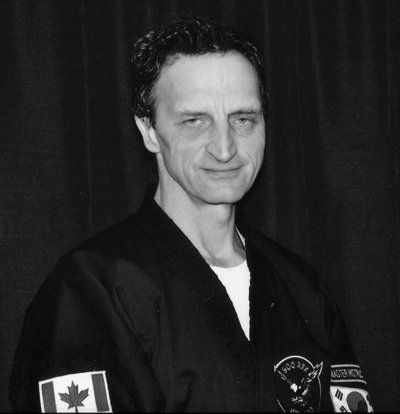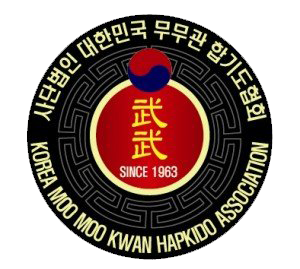About Hap-ki-do
ABOUT HAP-KI-DO
Hap-Ki-Do is a self-defense-based martial arts system, incorporating numerous methods of attack and defense including strikes, joint manipulation, throws, take downs and weapons defense. Though rooted in traditional techniques and philosophy, Hap Ki Do has continually modernized as culture has changed over the years. The tendency of this martial art to change with the times ensures that it remains an effective means of self-defense to this day.
To fully understand the true meaning of Hap Ki Do, we must understand what each word means.
“Hap”
means harmony, unity, coordination, together, or concentrated.
“Ki”
means energy, inner power or cosmic force.
“Do” means art, way of, achieve, or execute. Literally translated,
Hap Ki Do means "The Art of Coordinated Power".
There are three theories behind Hap Ki Do:
- Yu (flowing water)
- Won (circle)
- Wha (harmony)

THE THEORY OF YU (THE FLOWING WATER THEORY)
- Look at water flowing easily down the mountain. When it comes upon a stone or solid rock, it flows around it. From this we see water does not waste time and energy by pushing the rock, but simply flows around it.
- A single drop of water has no power or strength. However, many drops of water can cause great pain. So, in this case use your whole body to attack, like fists, kicks, knees, elbows, head butts etc.
- Water can shape into any form of vessel no matter what the shape. If you put water in a rounded or square vessel, water will shape into the vessel. The Hap Ki Do student should be like water and fit any situation. Whether standing, sitting or lying, Hap Ki Do defense should fit the situation. Whether you are tall, short, fat, or thin you should adapt your Hap Ki Do to fit.
- When it comes to water and power, water can be the most powerful thing in the world, turning huge waves into weight and momentum. Like a dam springing a small leak, the dripping water will eventually penetrate the small hole so hard that the hole will become larger and larger. In the same manner, the Hap Ki Do student's strength will flow through the opponent with stronger and more effective techniques.
- The strategy of the Hap Ki Do student comes from the water theory. So all together the Hap Ki Do student will adapt and stick to the fighter, by using momentum and applying water. The flowing techniques create other openings, which, in turn, invite other techniques. From this concept comes the idea of combat Flow.
THE THEORY OF WON (THE CIRCULAR THEORY)
The circular principles of Hap Ki Do are concepts that store momentum and leverage for executing the techniques in a natural flowing manner, allowing one to redirect the techniques constantly by merely changing the axis of the circle and with no loss of efficiency or balance. The natural, flowing, circular patterns allow the Hap Ki Do student to move from one technique to another almost instantaneously making the Hap Ki Do student a very elusive target and very dangerous.
The Hap Ki Do student will use a winding circular soft block to disrupt the opponent's force but also as a lack of resistance throws the opponent off balance. This circular motion will set up the aggressor into a position for a counter attack. The Hap Ki Do student should be like a twister or tornado. If anything stands in its way. It will feel the wrath of its centrifugal force. If the attackers punch does not enter into one's circle, and if the Hap Ki Do student chooses to block, it is considered a waste of time and energy. This is true with the same idea of the twister, if there is not an object in its way no harm will come to it.
The theory of circle is also applied for throws and for those Hap Ki Do kicks and strikes which are based upon circular or centrifugal force.
THE THEORY OF WHA (THE HARMONY THEORY)
Harmony is the most important element one should achieve in Hap Ki Do training. The Hap Ki Do students' harmony must manifest itself by uniting the mind, body, spirit, techniques, and environment. Harmony is the most important element one should strive to achieve through their training. We practice what we are shown countless times so that our body and mind will eventually act as one unit in response to a confrontation.
But when faced with an attack, the true Hap Ki Do practitioner reacts by instinct, not through conscious thought. If one must think about how to react, it is too late. Therefore, we practice our techniques repeatedly. Merely knowing how to use a technique is not good enough. The Hap Ki Do student should not only memorize the techniques, but the student's harmony should be Reflexive, Second Nature, or Action without Thought.
After one achieves harmony within oneself, the next requirement is to harmonize with one's opponent. Having accomplished this, the Hap Ki Do student will find it quite easy to control the movements and energy of an opponent. The words “non-resistance" are often substituted for harmony in defining the theory. Before an attack can be directed in a circular manner, it must first be received or intercepted with a non-direct block or maneuver, thus allowing a harmony to be created using the opponent's oncoming force to fuel the defending motion.

Kim Yong Man
Founder
Founder of The Moo Moo Kwan Hap-Ki-Do Federation in 1963
Master Peter A. Cornacchio Jr. was born in Sault Ste. Marie Ontario. Proudly Italian, he grew up along the shores of the St. Mary’s River; where what became his lifelong pursuit of steelhead and rainbow began.
The seventies were an important decade for Master Cornacchio; he completed the long process to become a certified International Carpenter Journeyman, and met his wife and partner, Tracy. The patience and skill that shaped his hobbies and work life brought him to study at the Ancient Fighting Arts with GM Rudy Timmerman in 1973 until that school closed.
He was fortunate to have met and studied with one of the martial arts greatest practitioners the late Master Robert Dalgleish. Master Cornacchio went on to study with Master Anthony Belsito and after his retirement, Master Rob Doiron. He received his First Degree Black Belt from the Canadian Hap Ki-Do Alliance. Grand Master In Suk Pak, President of the World Kong Shin Bup Hap Ki-Do, certified Master Cornacchio’s Second Degree Black Belt.
Over 40 years later, Master Cornacchio remains a humble practitioner of Hapkido. Even with his business and martial arts success, he is most proud to be the adored father of three children and the beloved “Sir” of his many students

Yun Seong Yong
Chairman
Chairman of The Moo Moo Kwan Hap-Ki-Do Federation
Master Peter A. Cornacchio Jr. was born in Sault Ste. Marie Ontario. Proudly Italian, he grew up along the shores of the St. Mary’s River; where what became his lifelong pursuit of steelhead and rainbow began.
The seventies were an important decade for Master Cornacchio; he completed the long process to become a certified International Carpenter Journeyman, and met his wife and partner, Tracy. The patience and skill that shaped his hobbies and work life brought him to study at the Ancient Fighting Arts with GM Rudy Timmerman in 1973 until that school closed.
He was fortunate to have met and studied with one of the martial arts greatest practitioners the late Master Robert Dalgleish. Master Cornacchio went on to study with Master Anthony Belsito and after his retirement, Master Rob Doiron. He received his First Degree Black Belt from the Canadian Hap Ki-Do Alliance. Grand Master In Suk Pak, President of the World Kong Shin Bup Hap Ki-Do, certified Master Cornacchio’s Second Degree Black Belt.
Over 40 years later, Master Cornacchio remains a humble practitioner of Hapkido. Even with his business and martial arts success, he is most proud to be the adored father of three children and the beloved “Sir” of his many students
Timeline
http://globalhapkidokorea.com/about-us/
QUICK LINKS


Canadian Headquarters for the
Korean Moo Moo Kwan Hap-Ki-Do Federation
Copyright 2018 Soo Dan Hap-Ki-Do | Made with ❤ by
Jeronamo Solutions
